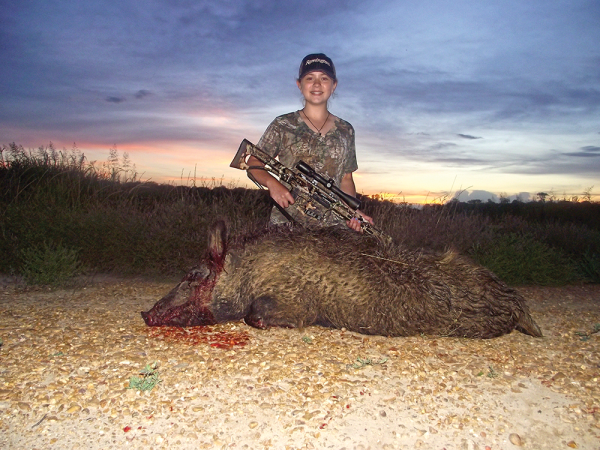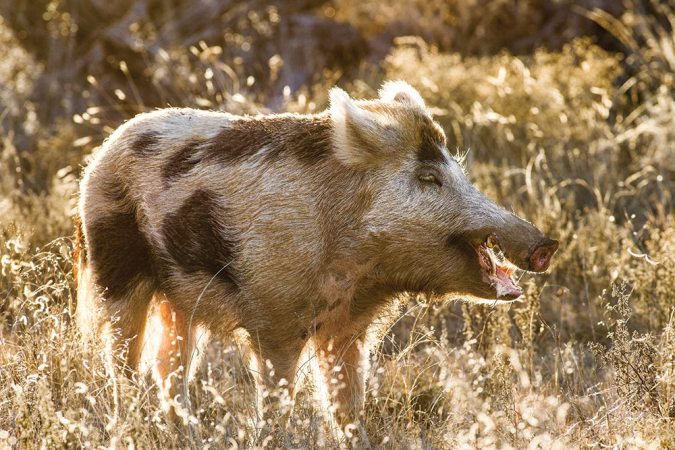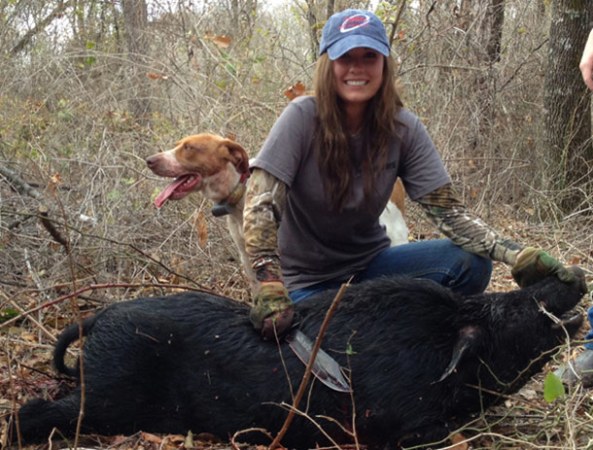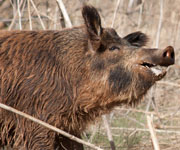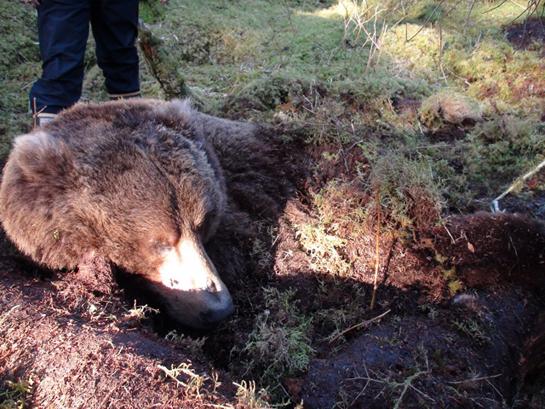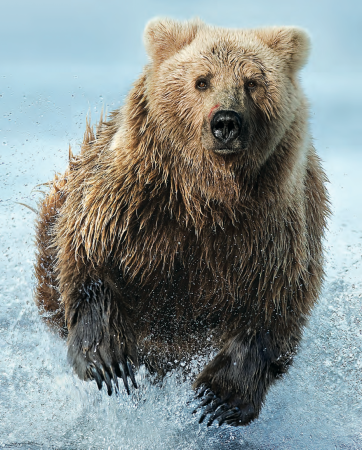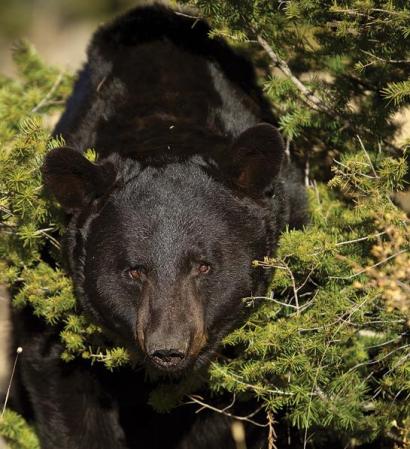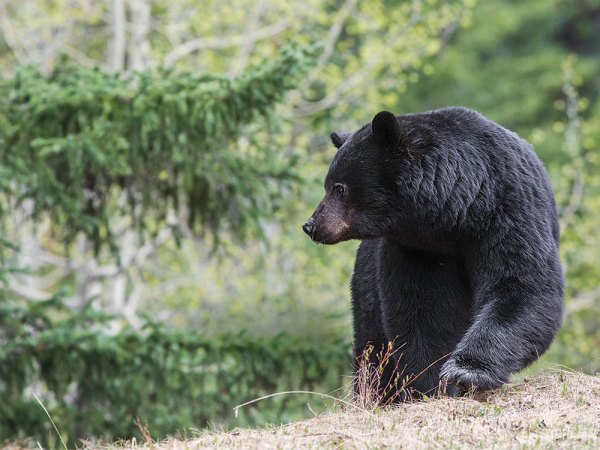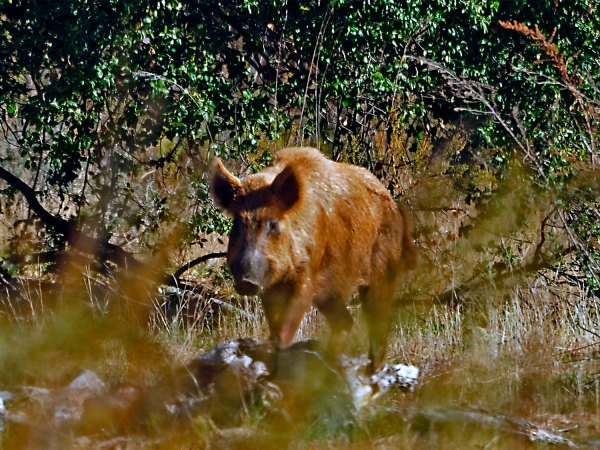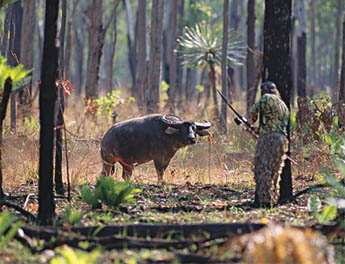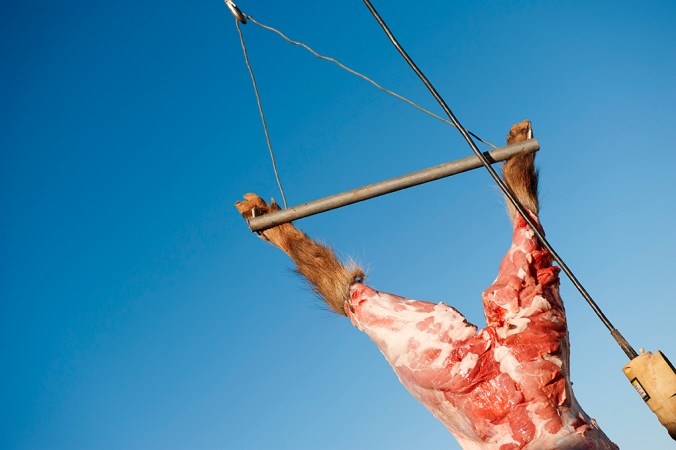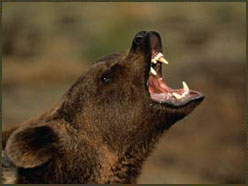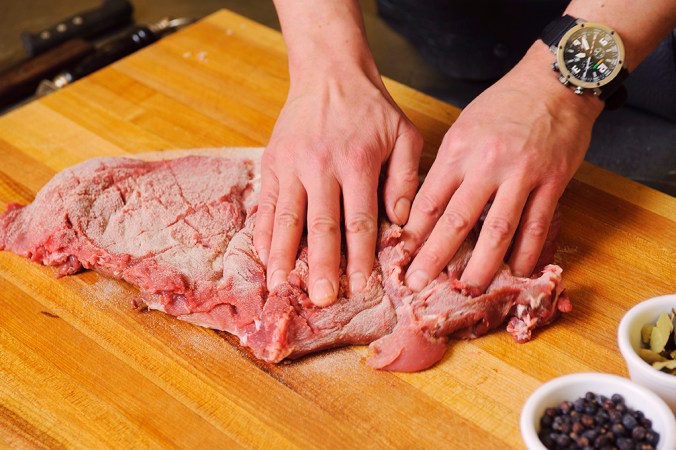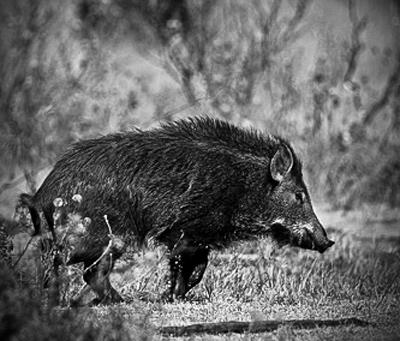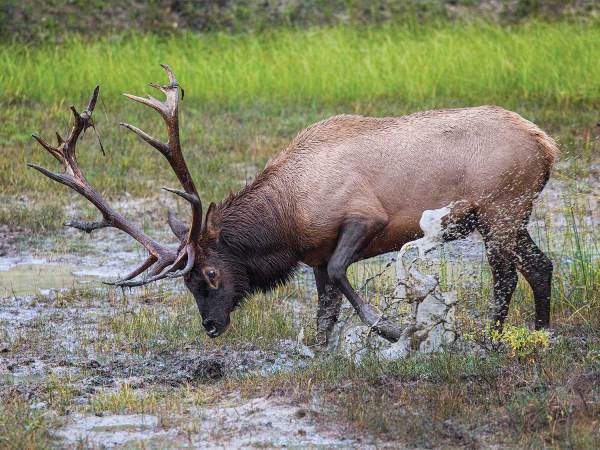Put away thebait, dogs and spotlights
In California and from Texas to Florida, wild hogs provide year-round hunting opportunities and mighty fine eating. Due to the lenient regulations governing the pursuit of hogs, some hunters have never engaged a wild pig in a one-on-one manner. Baiting, hounding and midnight spotlighting are common and perfectly legal practices in many places. Hunters often take up these activities where hogs are nuisance animals and are culled in large numbers. Others believe hogs are virtually impossible to harvest any other way. Hogs are totally nocturnal, they say, or hog habitat is too thick.
While there is some merit to these claims, none represent the whole truth. Hogs indeed can create localized, temporary habitat disturbance, but there is no reason they can’t be hunted by methods typically reserved for whitetails and other large game. Like deer, hogs inhabit thick cover and they do move a lot at night. But they are far from invincible to the daytime hunter armed with only gun or bow. Here’s how to bring home the bacon.
STAND-HUNTING
Ambush hogs from a ground blind or tree stand in early morning or late evening, when they are most active. Hogs do not have particularly acute eyesight, so ground blind construction needn’t be elaborate. In fact, I rarely use one at all. By simply wearing camouflage clothing and keeping movement to a minimum, I’m almost never seen by hogs. Location is more important than concealment.
To find a good place for a stand or blind, scout for signs of regular hog activity in these locations:
TRAVEL LANES: Wild hogs are creatures of habit and will often use the same routes between bedding and feeding areas. Hog tracks are two-toed, similar to deer tracks in size and shape, but more rounded.
Hogs are short animals. While deer have no qualms about traveling through tall grass (which they can see over), hogs more often travel through jungles of woody brush where the ground is clear. Such thickets are hard for humans (or even deer) to negotiate, but they are like highway tunnels for hogs. Take up an ambush downwind of where multiple trails converge in such cover and clear shooting lanes with a pair of pruning snips.
CROSSINGS: Last year I hunted hogs on a working cattle ranch that was laced with barbed-wire fences. At a corner where one pasture met the woods, a small depression created a passage under the bottom fence wire. Beneath the wire, the ground was pummeled bare with hog tracks, and tufts of bristly hair hung from several barbs. This proved to be a good spot for an ambush.
Fences, creeks, ditches and other barriers can all work to concentrate hogs at such passages. When I’m scouting, I’ll always walk along these features until I find a crossing. Not only is the crossing itself a good place for an ambush, it’s also an excellent starting point from which to expand the search for bedding, feeding and wallowing areas.
WALLOWS: Hogs will often visit shallow ponds, wet ditches and natural seeps where they can enjoy a good roll in the mud. Wallowing not only cools a hog, it also gives it relief from biting insects. Hunting a wallow is usually a waste of time during cool or breezy weather, but on a warm, calm day a wallow can be a hog magnet.
FOOD SOURCES: Hogs may alter their feeding locations drastically as various natural foods come into season. For example, on one Texas ranch where I hunt, the hogs will be found in lush green fields and meadows in March and April. But in September those same fields are empty; at that time the hogs are gorging on the ripening fruits of prickly pear cactus. Hogs are also fond of commercial crops, such as grains and melons. (They really love melons!) Get out in the early morning or late evening to find feeding hogs, or to look for evidence of rooting activity.
STALKING AND STILL-HUNTING
By far, my favorite way to hunt hogs is to sneak up on them. Still-hunting is slowly creeping along through likely cover, hoping to encounter animals. Stalking, by contrast, is closing the gap between yourself and an animal you’ve already spotted. So when you spot an animal while still-hunting, your still-hunt becomes a stalk.
The best time for spot-and-stalk hunting is on cool, breezy days in late winter or early spring during a new moon. In such conditions, hogs might feed in the open all day long. Feeding hogs are highly vulnerable to the stalking hunter. Good optics are helpful for evaluating the size of boars, if that matters to you, but aren’t needed to find them while they’re feeding. Hogs’ black coats stand out starkly in almost any landscape. And when I hunt hogs, I’m after hams, not tusks. I prefer young boars in the 80- to 120-pound range.
However, good optics are important when still-hunting, because even a jet black hog is difficult to spot when bedded in the shadows of a dense thicket. Let’s just say that I’ve had some very thrilling close encounters with wild hogs while still-hunting. My favorite time for still-hunting is at midday when the weather is very warm and windy. Under these conditions, I know hogs will bed in shady areas near water.
Last April in Texas, my annual hog hunt coincided with unseasonably warm weather. A hot south wind drove temperatures well above 80 degrees and sent hogs looking for shade near water. I slowly crept through creek-bottom thickets, into the wind, peering into the shadows. Despite my patient looking, I actually smelled the hogs before I saw them. When the odor of pig hit my nostrils, I froze and began to disassemble the thicket with my eyes.
Just about the time I spotted the ear of a bedded hog–just 10 steps away–the wind swirled, and the herd got my scent. Hogs went fleeing in every direction. I raised my rifle and fired, but missed a young boar as he scampered through the brush.
A cold front blasted across the ranch the next morning, sending temperatures down into the 40s. I spent the day glassing hogs in open meadows. In late afternoon I made a quarter-mile stalk on a small herd of hogs feeding in a green power-line cut and dropped a 100-pound boar at 75 yards.
Wild About Pork
This dish takes a whole day to prepare, but it’s worth it. I once took this to a potluck dinner attended mostly by nonhunters, and it disappeared faster than a tomcat at a dog show.
INGREDIENTS:
1 whole hindquarter from a young wild hog, skinned and washed
BRINE:
1 gallon water
½ cup kosher salt
½ cup brown sugar
20 whole black peppercorns
BASTE:
1 12 oz. can root beer
1 tablespoon prepared mustard
¼ cup orange juice
2 tablespoons vegetable oil
DIRECTIONS:
STEP 1: In a large cooler or plastic bag, soak hindquarter in the brine for a minimum of 24 hours. To cook, start charcoal or electric smoker with hickory. When smoker is ready, put hindquarter on top rack of smoker with a pan of water on a lower rack.
STEP 2: Smoke hindquarter for 5 to 6 hours over low to medium heat, turning every hour and painting with baste mixture.
STEP 3: Transfer hindquarter to a large roasting pan and pour remaining baste over it. Cover and finish cooking in 325-degree oven, checking every 30 minutes until meat is tender and pulls free with a fork.
STEP 4: Remove from oven and let cool. Carve and serve with pan juices ladled over the meat.

